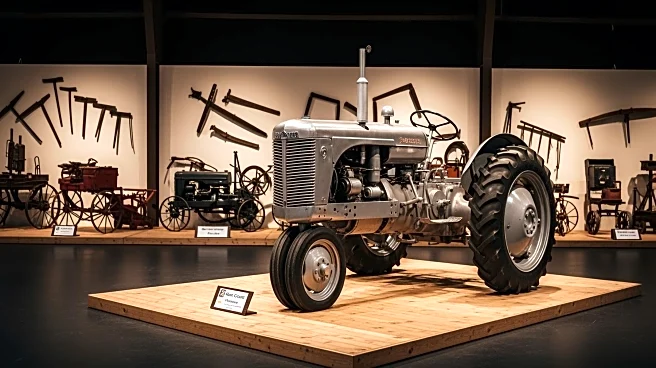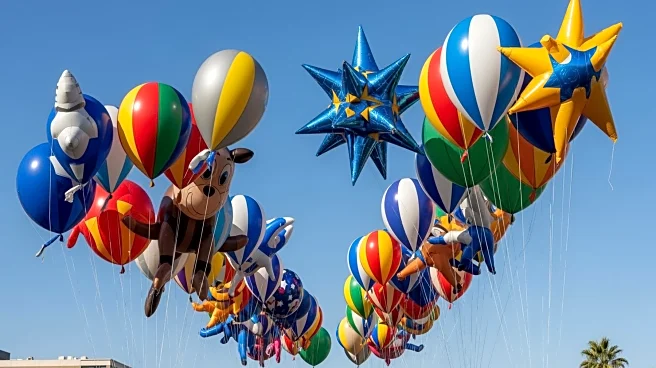What's Happening?
University of Florida students have successfully merged art and agriculture through a unique hay bale exhibit. Led by Rosemary Springer, a recent graduate of the sculpture and studio art master's program,
the project was part of the Dr. E.T. and Vam C. York Art and Agriculture Competition. The initiative invited students from the College of Agricultural and Life Sciences and the College of Arts to collaborate on projects that blend scientific and artistic disciplines. The winning project involved wrapping hay bales with stories from small family farms across the United States, aiming to highlight the unseen labor and history behind agricultural products. The project was displayed at the University of Florida, showcasing the potential for cross-disciplinary collaboration.
Why It's Important?
This project underscores the importance of interdisciplinary collaboration in education, particularly between the arts and sciences. By integrating art with agriculture, students are encouraged to think creatively and broaden their understanding of both fields. The initiative not only raises awareness about the challenges faced by small farms but also provides a platform for students to engage with real-world issues through innovative solutions. Such projects can inspire future collaborations that address complex societal challenges, fostering a generation of thinkers who are equipped to tackle diverse problems.
What's Next?
The success of the hay bale exhibit suggests potential for future projects that further integrate art and agriculture. The University of Florida may continue to support such interdisciplinary initiatives, encouraging students to explore new ways of communicating important messages. As the competition grows, it could attract more participants and inspire similar programs at other institutions, promoting a broader understanding of the interconnectedness of different fields.
Beyond the Headlines
The project highlights the cultural and ethical dimensions of agriculture, inviting viewers to consider the stories and labor behind everyday products. By presenting these narratives through art, the exhibit challenges traditional perceptions of agriculture and encourages a deeper appreciation for the people and processes involved.












